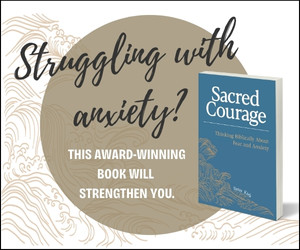EMQ » July–September 2022 » Volume 58 Issue 3

Translation’s Complex Costs
The translated Word of God is regarded as one of the greatest evangelizing tools in existence. But while the results of Bible translation are undeniable, the task is an enormous undertaking with tremendous challenges and costs. Bible translation projects are complex and varied, however three primary factors that drive costs are context, medium and roles.
By Mart Green
Translating the Bible in every language in the world is a Great Commission work undeniably aligned with God’s heart. In many areas where this work is taking place, the translated Word of God is regarded as one of the greatest evangelizing tools in existence. Even where there are not yet believers, people may read a newly translated portion just to see something written in their own language and come away from the text with their hearts transformed.
This was the case among the 520,000 Yao speakers in Tanzania. Before receiving the book of Acts, community leaders said they had no understanding of God’s love for all people. But when they heard the message of God’s love through Jesus Christ in the Scriptures, it gave them hope and strength to face challenges like religious tensions. While Islam has long been a prominent religion in the area, many Muslims are now recognizing Jesus not just as a great prophet, but as their Savior.
“This is what we need to read!” said one Yao speaker. “Our Muslim family and neighbors have become Christians because of this Book. Now that we have seen [books of the Bible] published in Yao, we want to see more printed in our language.”
The results of Bible translation are undeniable, but the task is an enormous undertaking with tremendous challenges and costs. What does it actually take to complete a Bible translation project today?
Breaking Down a Bible Translation Project
Bible ministry is inherently expansive, and Bible translation is a critical part of the process! Preparing for Bible translation often includes linguistic research and developing a written language system. Then, once a project is conceptualized and designed, the needs of the local community determine its Scripture goals. At this stage of readiness, the targeted work of Bible translation begins. It ends only after all the stages have been completed: first draft, team check, testing it in the local community, back translation (taking the text from the local language back into the original language to confirm accuracy), checking the text with a consultant and, finally, proofreading.
Counting the Cost
While it’s difficult to put a price tag on life transformation, it’s also important to understand the monumental nature of making God’s Word available to all people. An average Bible translation project costs about $60,000 per year and lasts between seven years (for a New Testament) and 16 years (for a full Bible). Here’s a breakdown of the typical costs:
- $35 translates a verse.
- $1,000 translates a chapter.
- $60,000 provides 1 year of translation progress.
- $120,000 provides translation for portions of Scripture.
- $420,000 translates a New Testament.
- $960,000 translates the full Bible.
When financial partners give toward a Bible translation project, much of their gifts go to field costs like tools, training and translators. Additional costs include a well-designed project plan and accountability structure, advancement expenses and administration. There are also costs associated with supporting and accelerating projects like training more local people in translation to build capacity, maintaining existing technological translation tools and research into promising new translation innovations.
Costs for each project can vary based on the complexity and context of the project (i.e., the part of the world the project is in, the Scripture portions being translated, the medium being used for translation, the number of translators from the local community who need to be financially supported, the role of the local church in the project, and other factors). Let’s take a closer look at the three primary factors driving translation costs: context, medium and roles.
Context is Key
Context refers to where the translation takes place. Social, cultural and economic conditions define the current environment and have to be taken into account when designing plans. Economic conditions impact the cost of living, but there are also cultural variations in what is appropriate or required for remuneration of services. In locations that are hostile toward Christians, extra measures may need to be taken for physical and digital security, which in turn drives up costs. A community with limited access to education and internet resources may also require additional training and support to complete a project.
The Medium Makes the Difference
The medium of translation refers to what type of translation will be produced. Oral translations, for example, require the fewest resources to produce and are therefore typically the least expensive. This is followed by written translations, and finally sign language videos represent the most expensive type of translation due to the complexity of the process. Sign language Bible translation is done as a video series of either chronological Bible stories or by each book of the Bible.
Though there are more than 400 different sign languages around the world, in 2020 we celebrated the first sign language to have all 66 books: the American Sign Language Version. As more sign language translations become available and it becomes possible to work more efficiently using similar translations within a language group, we can anticipate decreased costs.

Changing Roles
Historically, one of the major factors contributing to the cost of Bible translation has been reliance on Western missionaries to manage the projects. But by changing who is involved in a project and how roles and responsibilities are divided among contributors, we’re seeing a real impact not only on the quality but also on the cost of the work.
In recent years, the global church made missiological shifts toward equipping and empowering local believers to reach their own communities rather than importing Western leadership and influence, and Bible translation is no exception! With this trend toward local ownership and sustainability, we’re seeing better returns on investment and new opportunities to support other aspects of the work, like capacity development and technological advances. Eventually we hope to see entire church-based projects that enable indigenous churches to lead translation from start to finish without hands-on assistance from others, which would further decrease translation costs. This emerging methodology is well on its way to becoming a reality.
The God-Sized Solution: A Collective Impact Alliance
In 2010, several Bible translation leaders came together and collectively grieved that, despite the individual efforts of their organizations, millions of people still lacked access to Scripture in a language that speaks to their hearts. With a clear calling and a shared passion to rectify this injustice, they formed illumiNations, a collective impact alliance of 11 Bible translation organizations and five partners who contribute significant resources to support the work.
Of the 7,300 languages used globally, the alliance identified about 6,000 with an estimated vitality that suggests Scripture translation is needed and established goals toward reaching them. We call these the “All Access Goals,” and see them as milestones, not endpoints, in the broader Bible translation movement. These goals state that by the year 2033:
- 95% of the world’s population will have access to a full Bible.
- 99.96% of the world’s population will have access to a New Testament.
- 100% of the world’s population will have access to at least some portion of Scripture.
- The world’s 100 most strategic written languages will have access to two viable translations of the Bible, including critical revisions in 26 languages.
IllumiNations remains committed to Bible translation that is accurate, efficient and as cost-effective as possible. Through this alliance, God has paved the way for gifted experts to develop and distribute tools that accelerate the work not just for one organization, but for all partners involved in this ministry. Together we are constantly evaluating and implementing ways to accelerate the work adapting as new technology develops and the global church expands at an unprecedented pace. And as access to common data and resources grows, we continue to see fewer redundancies, more effective solutions, increased efficiency and long-term cost savings across the board.
Today 3,649 language groups just like the Yao of Tanzania still need the hope of God’s Word in their language. The translation work that remains is complex and resource-intensive, often located in some of the most difficult places in the world. But it is worthwhile.
As a collective impact alliance of 11 Bible translation agencies, each one acknowledges that the global task remains too large for them to complete on their own. With the faithful support of other believers, together we can continue this work and eradicate Bible poverty in this generation. We’re looking forward to celebrating the day when every person on earth has access to Scripture in a language and form they can clearly understand.

Mart Green is the ministry investment officer for Hobby Lobby and serves on the board. He is also the founder of Mardel Christian and Education Supply stores. He was one of the producers of the theatrical release, End of the Spear. He serves as trustee emeritus of the Oral Roberts University board of trustees and leading champion of illumiNations, a collective impact alliance working to eradicate Bible poverty by 2033.







I appreciate this acknowledgement of the complexities involved in funding Bible translation ministry.